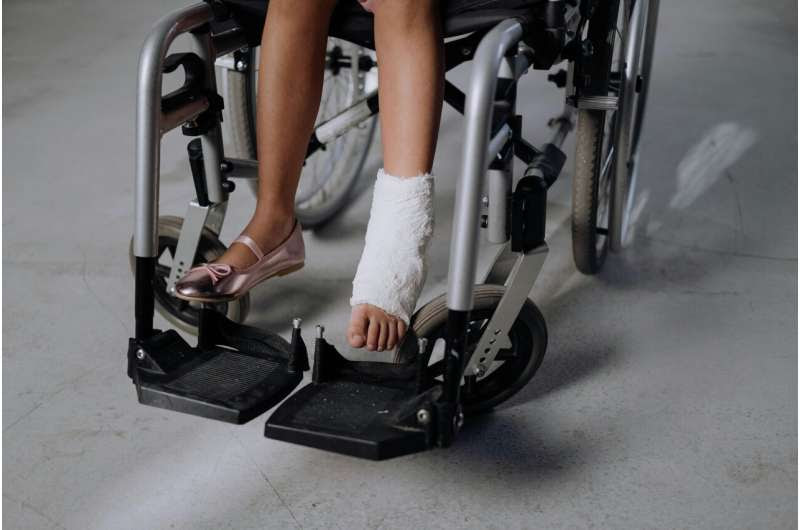by Ellen Goldbaum, University at Buffalo

Credit: cottonbro studio from Pexels
Children taking psychostimulant drugs prescribed for psychiatric disorders including attention deficit hyperactivity disorder (ADHD) who experience a common childhood fracture take longer to heal than children who don’t take these drugs, University at Buffalo researchers report.
The findings were published in the Journal of Pediatric Orthopaedics B in September. The researchers note that not only is this finding important for children taking these drugs for ADHD and specific disorders, it is concerning in light of the fact that many children in middle and high school—as many as one in four—may be taking the drugs illicitly, according to a recent national report.
The research emerged from the UB researchers’ preclinical work in which they developed a pharmacokinetic animal model to examine how these drugs impact bone. They found that bone strength and density weakened in rats that were administered these drugs. This sparked the researchers’ interest in examining whether this was an issue for children who are prescribed these drugs, which are some of the most commonly prescribed for children.
Most common psychiatric disorder in children
ADHD is the most common psychiatric disorder diagnosed in children. A 2020 national survey found that 9.3% (5.6 million) of children in the U.S. aged three to 17 have been diagnosed with it. Methylphenidate and mixed amphetamine salts (MAS), marketed as Ritalin and Adderall, respectively, are the drugs most commonly prescribed for the condition.
The UB researchers did a retrospective review of pediatric records of patients and X-ray images over 10 years. They looked at at the bone density of 62 children between the ages of six and 18 who were taking these drugs and who had a distal fracture, and compared them to 126 matched controls who had had such fractures but weren’t taking these drugs.
Patients who took methylphenidate and MAS exhibited significantly reduced bone healing by approximately 20% after experiencing a distal radius fracture, the most common type of fracture, which accounts for a quarter of all childhood fractures. It typically occurs when the child falls on an outstretched or flexed hand.
The longer a patient took the drug, the lower the bone density, up to as much as 52% less, compared to controls. However, that effect leveled off after five years of treatment.
“This is helpful for orthopaedic doctors because if a patient is taking this medication, it could affect how much time it will take them to heal from a fracture,” says Panayotis (Peter) K. Thanos, Ph.D., corresponding author and senior research scientist in the Department of Pharmacology and Toxicology in the Jacobs School of Medicine and Biomedical Sciences and UB’s Clinical Research Institute on Addictions. “Doctors should be asking about psychostimulant use and consider that additional time for healing from such fractures may be needed in these patients.”
Exploring a possible mechanism
Thanos says his team’s previous work has shown that these drugs impact bone at the cellular level. He says the drugs affect osteoclast differentiation and activity during healing; osteoclasts are bone cells that play a critical role in normal bone remodeling, the final phase of fracture repair.
“This would explain the reduced amount of bone healing we observed in the experimental group in this study,” the authors write, adding that additional investigation as to the specific mechanisms involved in humans is needed.
Thanos notes it is at this point unknown whether this issue with healing persists after the patient stops taking the drug or if the problem with bone density persists into adulthood. The finding from previous studies that females are more significantly affected also needs to be further studied.
Also of concern, he adds, is that it is known that many children and young adults are taking these drugs to enhance cognition, often illicitly or by obtaining the drug from a friend or family member.
“Orthopaedic surgeons planning elective surgeries should be cognizant of this as a potential issue in recovery and they should pre-operatively optimize bone health, as well as counsel patients and their families,” he says.
More information: Layla M. Ortiz et al, Psychostimulants prescribed to children for ADHD following distal radius fractures significantly reduce bone density as a function of duration, Journal of Pediatric Orthopaedics B (2023). DOI: 10.1097/BPB.0000000000001125
Provided by University at Buffalo

Leave a Reply